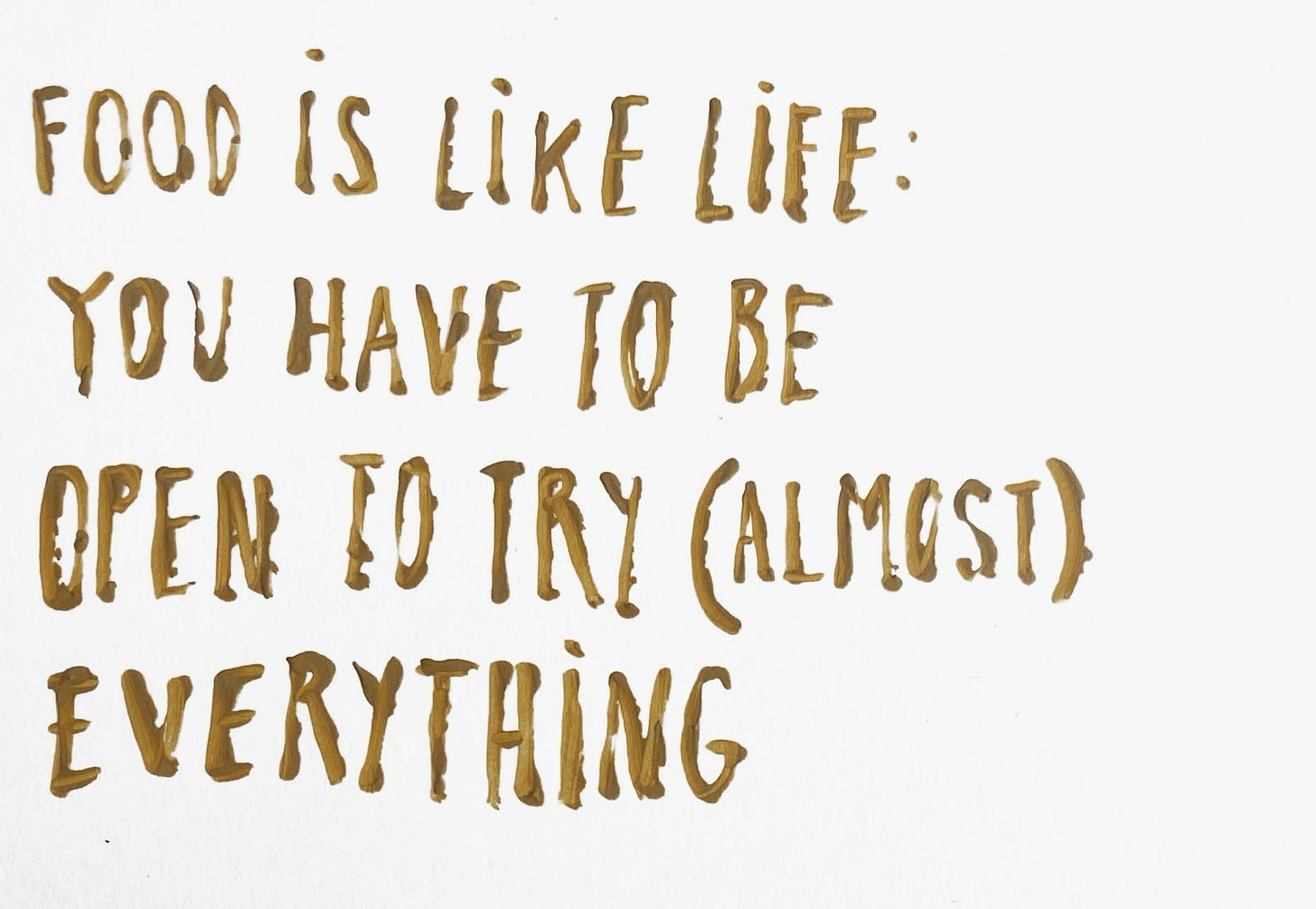atte. ADRIANA ESKENAZI
«What happens around a table is determined by what is on top of it»
Si quieres leer esta carta en español, la encontrarás aquí.
One of the things we enjoy most when working on an editorial project is the time we spend listening to those who share their stories with us. It’s no coincidence that we often do this around a table. In a way, tables are a lot like books—they have the power to build bridges and connect worlds, names, roots, places, pasts, futures, and perspectives as diverse as they are common.
That’s how atte. was born, as an extension of our publishing house, Tabletimes. We wanted to replicate that essential process of connecting with close people and coming together to create objects for the table, made with care and attention. This is also where the idea of collaborating with artists, designers, artisans, and friends came from—people who, like us, see food as an act of connection.
And we’re thrilled to launch this project alongside Adriana Eskenazi. We met her last year in her studio in Barcelona, and during that meeting, we imagined a textile piece that, like her canvases, could capture her unique view of the world—with that special sense of humor and generous spirit that masters the art of enjoying the simplest things.




Those who already know her can only confirm it, and for those who want to get to know her better, Adriana is an artist who knows exactly how to express emotions through her work. She’s also someone who believes food is never something to take lightly. And more than that, she knows that when enough people come together for a shared cause, magical things can happen.
Those who already know Adriana can only confirm this, and for those who want to know her better, she’s an artist who knows how to convey emotions through her work, and someone for whom food cannot be taken lightly. And she also understands that when we come together for a common cause, magical things can happen.
What's the flavour that instantly takes you back to your childhood?
I remember breaded meat very well. At my mom’s house, the breading was thicker and would separate from the meat, so I’d always end up using my fork to pull it apart, eating the meat first and then the loose breading afterward :) My dad, as a good Argentine, always made milanesas and would spend hours pressing the breadcrumbs into the meat with his fingers, so the result was a thin cut with the breading perfectly integrated. These days, I know which one I prefer, but as a child—when company matters more than what you’re eating (and I had a serious case of attachment to my mom)—my mom’s version was pure bliss.
Which tables would you go back to again and again?
My grandmother’s, my mother’s, my father’s, and my friends’ tables. For me, a good meal is nothing without the right mindset and good company. I can go to the same restaurant twice, once with a client and once with my partner. The dinner with the client might be boring and heavy, and that’s how the food will taste to me, no matter how good it is. But the next day, I could go with my girlfriend—who’s also a great friend when it comes to enjoying life—and savour that meal like it’s the last supper (the last in the literal sense, not Da Vinci’s). My family and most of my friends have a 100% guarantee of offering a great time—and they know how to cook too :-)
When did you start painting and where does your interest in depicting food on canvas come from?
I’ve always loved cooking and food in all its forms. I come from the world of photography, and during some slower periods of work (the freelance life…), I often considered studying cooking. But the truth is, I enjoy eating more than cooking. When I started painting, I naturally began with things I liked. It turns out that most of the things I like as objects are also edible :)
Where do ideas come from?
I think ideas are part of who you are. They relate to your influences, tastes, education, and thoughts. When you have the freedom to do whatever you want, you end up creating what you love most. I’d say an idea is a good reflection, and reflection is based on your knowledge.
What role does humor play in your pieces?
For me, it’s essential, both in my work and personal life. All the phrases in my paintings are somewhat ironic. Without humor, my paintings would just be plain objects. I enjoy being able to play around with the meaning of these phrases or act like I’m conversing with them from outside the canvas.
What do you aim to express through your pieces?
I try to talk about myself and what I like. It’s like looking in a mirror or reaching into one of my pockets. You find those things, those objects that reveal something about someone. It’s nothing transcendental or profound. I’m just talking about myself and about how lucky I feel to be able to enjoy all these things.
Which books have had a significant impact on you?
When it comes to real impact, the books from my childhood have influenced me more than the ones I read now. Although I enjoy current books and some are very good, I don’t retain them in my memory as well. However, with Little Nemo, I learned to live in my dreams and not fear them; with Jenny and the Problem Inventor, I learned that everyone has some problems we can’t get rid of, and we have to learn to live with them until one day they’re no longer problems. Maurice Sendak’s books, which I loved, were also very dreamlike and spoke to the fantasy and imagination, which I believe are essential for personal development.
How did Middle Feast come about?
A few years ago, I started sending a postcard to a different person every day. The project lasted a year or two, and the postcards always had little face drawings on the text side. One day, I had the idea of making t-shirts with the embroidered faces and decided to donate the proceeds from the sales to help refugees.
About a year and a half ago, while talking with a friend, Pablo, who also loves cooking, we thought about organising a meal based on Middle Eastern cuisine at a modest price. Part of my family is Turkish, and it’s a cuisine I feel very connected to—it’s one of my favourites. The idea was to do it like a pop-up, but at my mom’s house and without being professional chefs or anything. We came up with the idea of doing the same as with the t-shirts: donating the benefits. If it’s something we’re doing for fun, why should we keep the money instead of doing something useful with it? We already had our jobs, and while it doesn’t make us rich, it’s enough to cover our rent.
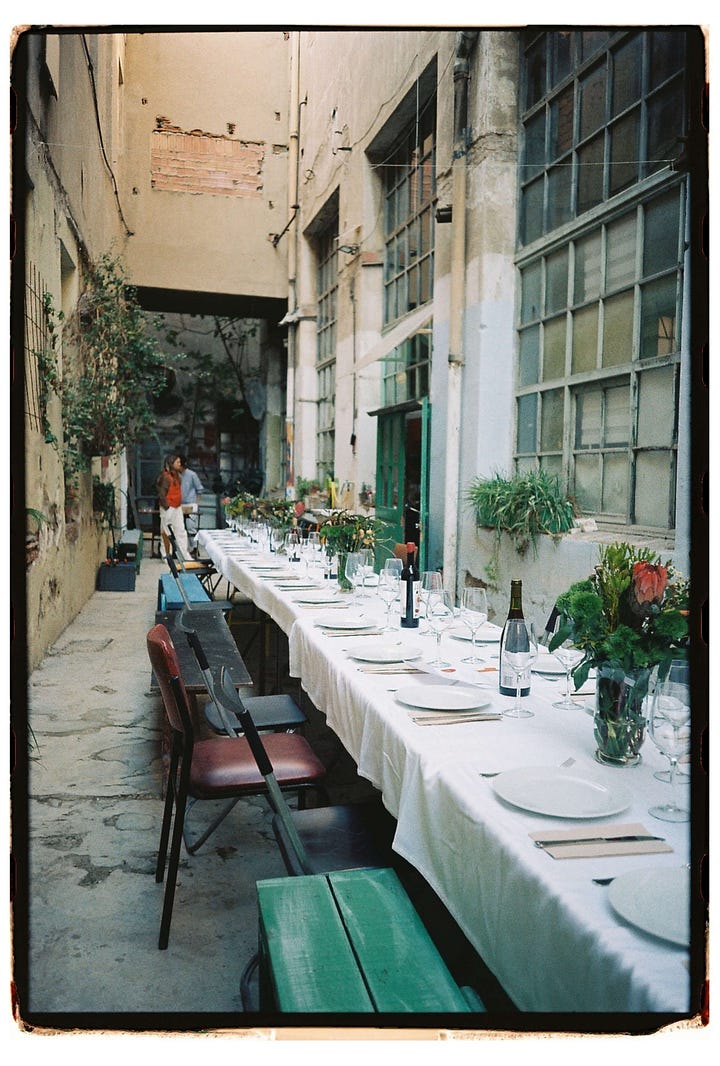
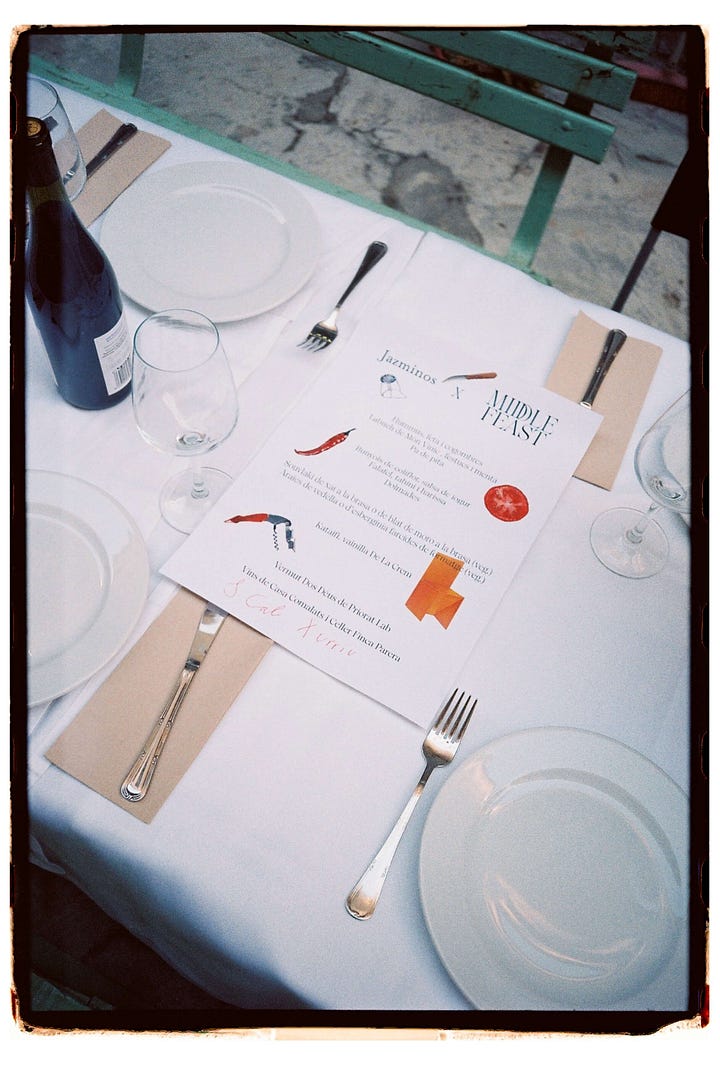
When we did the math, we realised that the profit from organising a meal ourselves would be very small, so we decided to make it bigger. Marta quickly joined the organisation, and from there, we kept receiving support. We asked Paula Sandoval (the chef for both editions of Middle Feast), who really knows how to work with that type of cuisine, to help us out. Since we were going big and aiming to raise more, we decided to also include raffles with donated products to sell more tickets. And while we were at it, we added a bit of an event with music to raise additional funds at the bar.
And that’s how it kept growing. This year, with the change in venue and the flexibility it allows, we’re focusing the event on promoting the culture of the country the funds are going to (in this case, Palestine) and connecting it with the culture of the city of Barcelona. To do this, we’re in touch with Palestinian artists and musicians who will somehow collaborate or be present at the festival, and the menu will be based on Palestinian cuisine, where Paula Sandoval has cooked for a while.
What were your impressions of the first edition last year?
It was truly moving, and we left with an incredible emotional hangover. It was wonderful to see so many people from such diverse backgrounds attending. I think people want to help, but sometimes it just doesn’t occur to them. For me, Middle Feast tries to make it easy. Ideally, everyone would do their part on their own, but we live in an unfair world that is simultaneously very connected and yet very disconnected from what doesn’t directly affect us. We are privileged, and we try to use that privilege to organise this. Ideally, we’d also have associations related to aid or the culture of the countries we’re supporting join in, which is something we’re currently working on.
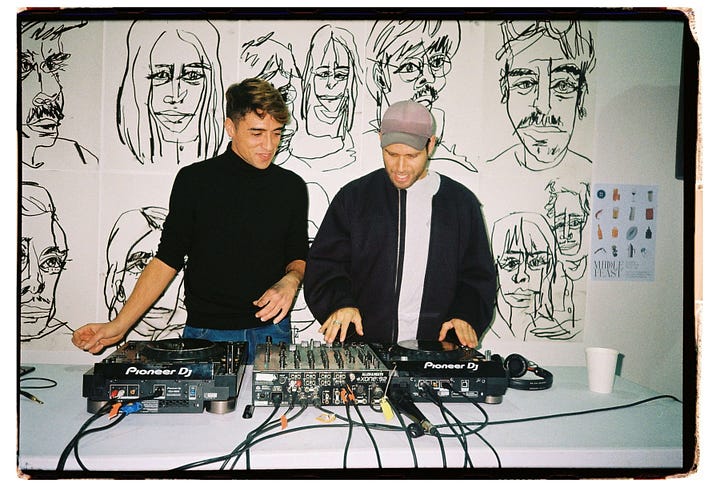
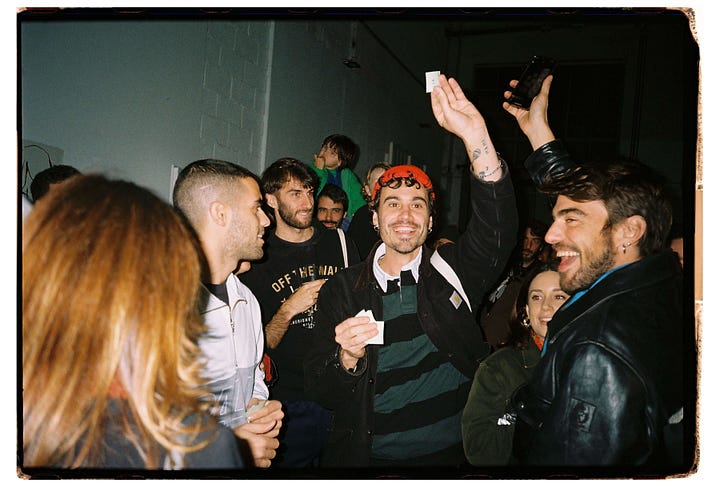
What has been the biggest challenge putting together an event like this?
Mostly the logistical and production issues. It’s a lot of work, and we have to juggle it with our other jobs. Fortunately, more and more people are getting involved and wanting to contribute to the cause selflessly.
How do you perceive the potential of food?
Food is something we have deeply integrated into our lives—it’s always there, it brings people together, and it’s something to be enjoyed. But in many places, food is scarce, with limited access, and it can cause pain and death. The potential it has here, in our privileged environment, is, for me, a cultural way to connect, learn, and enjoy. However, I also feel a sense of guilt for being able to have this perspective on food.
What’s essential on a table?
Someone who will eat what’s on it. Everything. Food shouldn’t be wasted.
Who nourishes you? Who have been your role models in your artistic, personal, and professional journey?
My mother and father are the first in all three areas. They taught me as a child to read good books, watch great movies, and to take an interest in the world around me. Then I have so many role models that if I name just three or four, I wouldn’t be fair to all the others.
Three petits plaisirs in your life…
Soap, food, and sex.
If you’re in Barcelona or will be there in October, don’t miss the second edition of Middle Feast on October 19th. The revenues from this edition will go to UNRWA, the United Nations agency for Palestinian refugees, and other aid organisations in Gaza. We’re really sad we won’t be able to be there this time, but we’re participating from afar by donating 100% of the profits from our tablecloths to this cause.
Thank you so much to everyone who is already waiting for their tablecloths!
In the meantime, we’re still in Mexico! We’ve had a rainy summer, far from the heat, but it’s been very fulfilling. In June, we packed up all our book stock and brought it with us to set up a pop-up in October (more info coming soon!). And since July, we’ve been working on our next publication. Stay tunned! ✌️
Atte. Tabletimes






